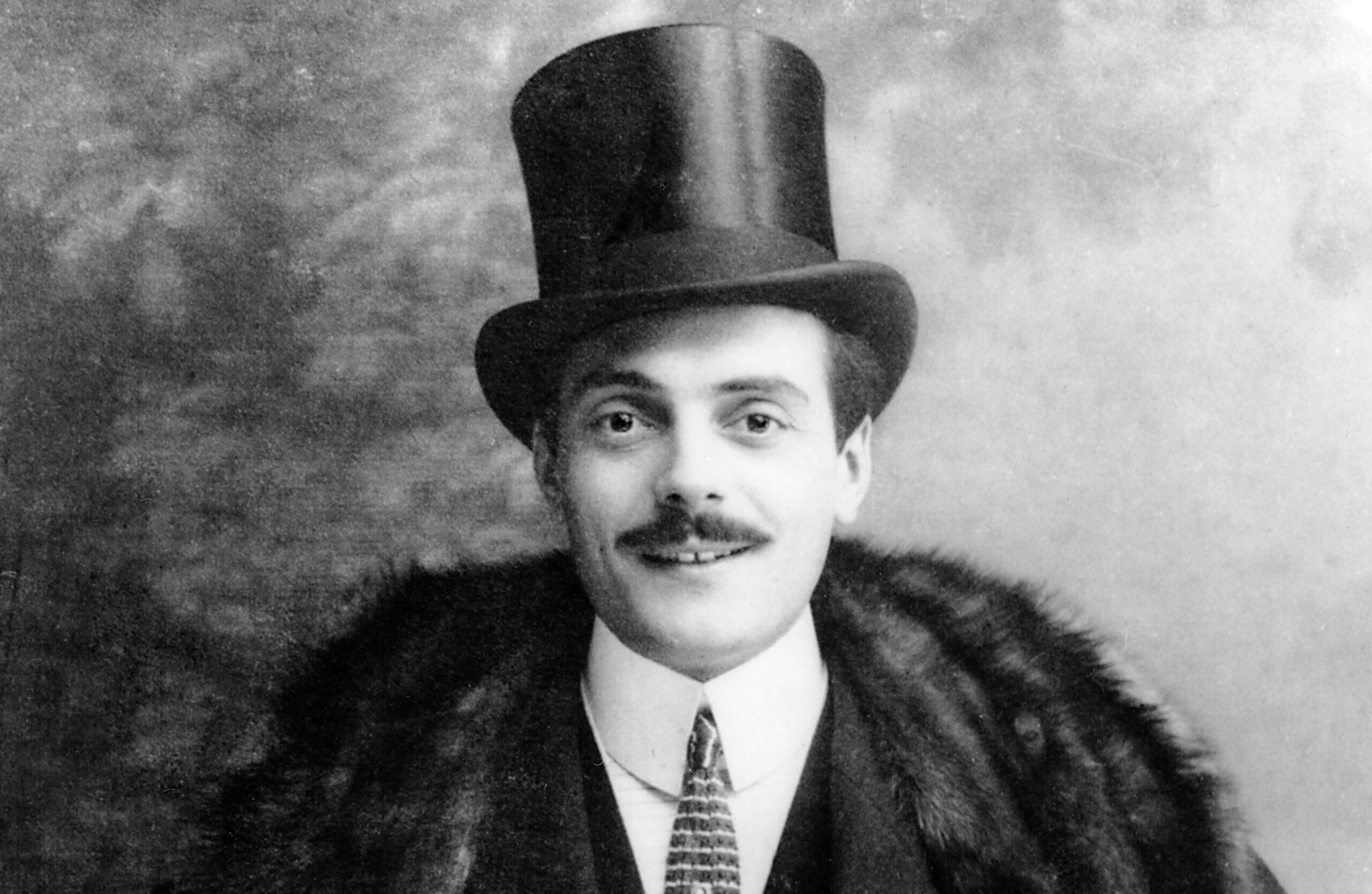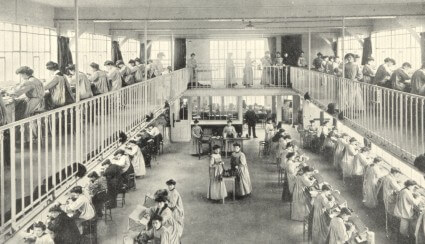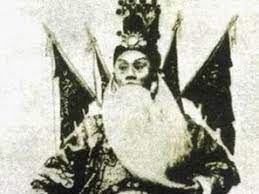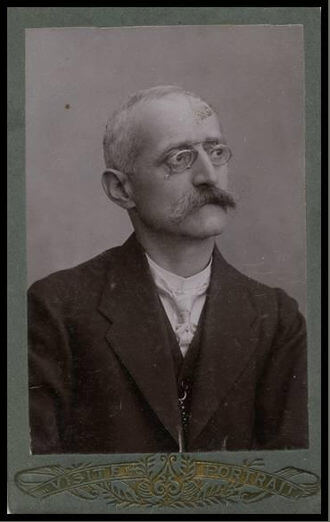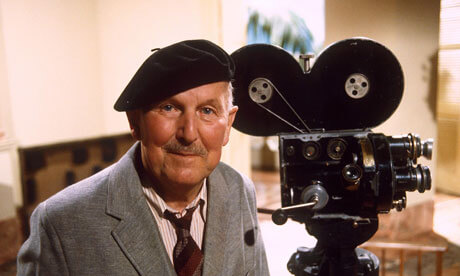The Year 1905 in Film: The Debuts of Max Linder, China, Republic of Macedonia and Slovenia
0This is a work in progress as I am still researching the year 1905 in film. I’ve added 365 films to my index so far whereas IMDb has 1,705 entries. I think I may have, however, found most of the surviving films. Conclusions drawn will be based on the data I’ve gathered so far and this article will be revised as my research continues.
Out of those 365 films, 138 were released in France, and 60 of those by Pathé frères, the leading film production company worldwide in the early 20th century. There are 26 films released by Georges Méliès, 11 from the Lumière Brothers, their final year of film production, and 37 by Gaumont, 32 of which were filmed in 1904 in Yunnanfu (today Kunming), China by Auguste François, consul, photographer and amateur ethnographer, thanks to a movie camera made available by Léon Gaumont. So far the USA is ahead with 164 films, 27 of which were released by the Edison company and 110 by American Mutoscope & Biograph. The remaining films were released by Paley & Steiner, their final year of film production, Siegmund Lubin, Vitagraph, the Miles Brothers and Walter G. Chase.
There are 30 films from the UK which seems to have had the largest number of film production companies in 1905 including the Charles Urban Trading Company, the Williamson Kinematograph Company, the Hepworth Manufacturing Company, William Haggar and Sons, the Sheffield Photo Company, the Warwick Trading Company, Pathé Frères Cinema (the British division of Pathé frères), Paul’s Animatograph Works, Mitchell & Kenyon and the Clarendon Film Company.
There are 23 films from the Manaki Brothers which are the first films produced in the Republic of Macedonia and one from China, the first Chinese film production. Slovenian cinema also began in 1905 with one film. So far I have one film from Italy, one from Netherlands, one from Germany, three from Spain, one from Poland and one from Sweden.
My YouTube playlist contains 216 films, 6 of those are incomplete, Walter Chase’s nine scientific films of epileptic seizures have been combined into one video. Of the remaining 141 films in my index one film can’t be uploaded to YouTube due to nudity but may be viewed on pCloud here. Another may only be viewed on BFI Screenonline which is limited to libraries, colleges and universities in the UK, 89 are held in the Library of Congress Paper Print Collection that haven’t been digitized and made available for viewing, 1 is held in the George Klein Collection by the Library of Congress, 5 are held by the British Film Institute, 3 are held in the UCLA Film & Television archive, 7 are held by the Centre national du cinéma et de l’image animée (CNC), 1 is held by the National Film & Sound Archive of Australia, 2 are held by the George Eastman Museum, 1 is held by Fondation Jérôme Seydoux-Pathé and 18 films are presumed lost (this number will certainly grow as my research continues).
Significant Events of the Year in the Film Industry
France
Max Linder Makes His Film Debut
Gabriel Leuvielle (16 December 1883 – 1 November 1925), known professionally as Max Linder, was a French actor, director, screenwriter, producer, and comedian of the silent film era. His onscreen persona “Max” was one of the first recognizable recurring characters in film. He has also been cited as the “first international movie star” and “the first film star anywhere”.
Born in Cavernes, France to Catholic parents, Linder grew up with a passion for theater and enrolled in the Conservatoire de Bordeaux in 1899. He soon received awards for his performances and continued to pursue a career in the legitimate theater. He became a contract player with the Bordeaux Théâtre des Arts from 1901 to 1904, performing in plays by Molière, Pierre Corneille, and Alfred de Musset.
From the summer of 1905, Linder appeared in short comedy films for Pathé, at first usually in supporting roles. His first major film role was in the Georges Méliès-like fantasy film La Légende de Polichinelle (1907). During the following years, Linder made several hundred short films portraying “Max”, a wealthy and dapper man-about-town frequently in hot water because of his penchant for beautiful women and the good life. Starting with Les Débuts d’un patineur in 1907, the character became one of the first identifiable motion-picture characters who appeared in successive situation comedies. By 1911, Linder was co-directing his own films (with René LePrince) as well as writing the scripts.
Linder enlisted at the outbreak of the First World War, and worked at first as a dispatch driver and entertainer. During his service, he was injured several times, and the experiences reportedly had a devastating effect on him both physically and mentally. It was during this time he had his first outbreak of chronic depression.
In 1916, Linder was approached by American film producer George K. Spoor, the president of the Essanay Film Manufacturing Company, to make twelve short films for him in the US at a salary of $5,000 a week. Earlier that year, Charlie Chaplin, then the most popular comedian in the world, had left Essanay for more money and independence at Mutual Film and Spoor wanted to replace Chaplin with Max Linder, whose pantomime skills were arguably equally accomplished. Linder was offered a new contract from Charles Pathé, but accepted Spoor’s offer and moved to the United States to work for Essanay later that year. Unfortunately his first few American-made “Max” films were unpopular both critically and financially.
Linder returned to France in 1917 and opened a movie theater, the Ciné Max Linder. However, due to his depression and anxiety about the still ongoing war, he was unable to continue making films on a regular basis. After the Armistice in 1918, Linder was able to regain his enthusiasm and agreed to make a film with director Raymond Bernard, the feature length Le Petit café in 1919. In the film, Linder plays a waiter who suddenly becomes a millionaire, but simultaneously is tricked into a twenty-year contract to be a waiter by the cafe owner. The film made over a million francs in Europe and briefly revived his career, but was financially unsuccessful in the US.
Four years after failing to become a major star in the U.S., Linder made another attempt at filmmaking in Hollywood and formed his own production company there in 1921. His first film back in the U.S. was Seven Years Bad Luck, considered by some to be his best film. The film contains one of the earliest (though not the first) examples on film of the “human mirror” gag best known in the scene between Groucho and Harpo Marx in Duck Soup twelve years later. Linder next made Be My Wife later that year, but again neither film was able to find a major audience in the U.S.
With his depression making it difficult for him to work, Linder returned to France in 1922 and in 1924 made a semi-serious film: Au secours ! for director Abel Gance. Linder’s last film was Max, der Zirkuskönig (1924) directed by Édouard-Émile Violet and written by Linder.
In late October 1925, Max and his wife Hélène Peters reportedly attended a Paris screening of Quo Vadis (1924), in which the main characters, as a reporter put it, “bleed themselves to death”, and died in a similar manner. They drank Veronal, injected morphine and slashed their wrists. Peters died first, while Linder was unconscious throughout 31 October, with doctors fighting to keep him alive. He died after midnight on 1 November.
There is still some question, however, as to whether the deaths were really a result of a suicide pact, or whether Max murdered his much-younger wife or pressured her into killing herself. On 2 November 1925, The New York Times reported that Hélène Linder had told her mother by letter that, “He will kill me.” In addition, Maud Linder, his daughter, reported in her memoir that the head of the workmen at Linder’s house in Neuilly overheard Max tell a friend that he planned to kill his wife along with himself, as he could not bear the thought of her belonging to another after he was gone.
In the ensuing years, Linder was relegated to little more than a footnote in film history until 1963 when a Max Linder compilation film titled En compagnie de Max Linder premiered at the Venice Film Festival and was theatrically released. The film, known in English as Laugh with Max Linder, was a compilation of Linder’s last three films made in Hollywood and its release was supervised by Maud Linder.
In 1983, Maud Linder made a documentary film, L’Homme au chapeau de soie, about Linder’s life and career. In 1992, she published a book about Linder in France, Max Linder était mon père.
Linder’s influence on film comedy and particularly on slapstick films is that the genre shifted from the “knockabout” comedies made by such people as Mack Sennett and André Deed to a more subtle, refined and character driven medium that would later be dominated by Chaplin, Buster Keaton, Harold Lloyd, and others. Linder’s influence on Chaplin is apparent both from Chaplin’s sometimes borrowing gags or entire plot-lines from Linder’s films, as well as from a famous signed photo that Chaplin sent Linder which read: “To Max, the Professor, from his disciple, Charlie Chaplin.” Mack Sennett and King Vidor also singled out Linder as a great influence on their directing careers. His high society characterizations as “Max” also influenced such actors as Adolphe Menjou and Raymond Griffith.
In his heyday, Linder had two major rivals in France: Léonce Perret and Charles Prince. Perrett later became a successful director, but his early career included a series of “Léonce” slapstick shorts that were popular but nowhere near the stature of Linder’s films. Charles Prince, on the other hand, was gaining popularity during his career and was nearly equal to Linder by the beginning of World War I. Prince’s screen persona was “Rigadin”, who like “Max” was a bumbling bourgeois socialite who always got into trouble. Both Linder and Prince were employed by Pathé in the early 1910s and they often used the same story lines, sets and directors. Years after both comedians’ careers were long over, Linder has received several revivals in interest while Charles Prince remains mostly forgotten.
-Adapted from Wikipedia
Pathé Introduces the Stencil Color Process
“As films grew longer, and their production increased, through the 1900s, so the idea of adding colours by hand became uneconomic. A mechanised system was required, and at around the same time that experiments were taking place in Britain to develop natural colour motion pictures, in France first Pathé and then Gaumont started developing processes for the mass production of multi-colour-tinted film prints through the use of stencils. This was a labour-intensive process (employing mostly female operatives) which could only be carried out by well-capitalised businesses with international distribution, and in the mid-1900s France dominated the world’s motion picture business. Hence France became the home of artificial motion picture colour.
Pathé introduced its stencil colour process in 1905, but the system in principle was not new, having been adopted from methods used for colouring postcards and wallpaper. A number of prints of any one film title would be made, each representing the different colours to be employed in the eventual film (i.e. a film featuring red, green, blue and yellow would require four original prints). The areas in each of the original prints to be coloured would be marked out and cut with scalpels. Each cut-out print would be laid over the final projection print and each colour would be applied in turn. 600 women were employed at the Pathé factory by 1906 to produce colour prints in this way.” – Luke McKernan, The Bioscope
The Lumiére Brothers Exit the Film Industry
“After all of their film development and success, the brothers decided to return their focus to photography, as they believed “the cinema is an invention without any future”. By 1907, they produced the first practical color photography process, known as the “Autochrome Lumiere”. The Lumiére Company continued to be a major supplier of photographic products throughout Europe during the 20th century. Following their photographic inventions and productions, Louis focused his interest in stereoscopy, or 3-D imaging, and stereoscopic films throughout the 1930s, while Auguste focused on medical research including studies on tuberculosis and cancer.” – Kyerstin Hill, Marquette University, for IPHF
USA
John P. Harris and his brother Harry opened the first theater in the U.S. devoted exclusively to the exhibition of motion pictures in Pittsburgh dubbing it a nickelodeon. The opening feature was The Great Train Robbery (1903). The name for the converted storefront, dance hall or theater was derived from the cost of admission — a nickel — and the Greek word for theater — “odeon.”
The Warner Brothers (Harry, Sam, and Albert) opened their first nickelodeon, a building that they called the Cascade Movie Palace, in New Castle, Pennsylvania. The historical marker at the present-day site states: “WARNER BROTHERS’ FIRST THEATRE – An early milestone for the Warners’ film empire was the operation by Harry, Sam, and Albert Warner of a theater here, 1906-07. It seated 99 persons, who could view three movies for a nickel. Sixteen years later, Warner Bros. Pictures was established.” Two years later, the Warners sold the Cascade and left New Castle, moving to Pittsburgh where they established their own film exchange, the Duquesne Amusement and Supply Company.
Cooper Hewitt mercury lamps made it practical to shoot films indoors without sunlight.
The first ever parody of a film was Edwin S. Porter’s 12-minute short The Little Train Robbery – a parody of his own The Great Train Robbery (1903).
UK
The First Dog Film Star
Rescued by Rover is a 1905 British short silent drama film, directed by Lewin Fitzhamon, about a dog who leads its master to his kidnapped baby, which was the first to feature the Hepworth’s family dog Blair in a starring role. The film, which according to Michael Brooke of BFI Screenonline, “marks a key stage in the medium’s development from an amusing novelty to the seventh art,” and, “possibly the only point in film history when British cinema unquestionably led the world,” was an advance in filming techniques, editing, production and story telling.
Four hundred prints were sold, so many that the negatives wore out twice, requiring the film to be re-shot each time. The style of shooting and editing would bridge the gap between the styles of directors Edwin S. Porter and D.W. Griffith.
Rescued by Rover is often considered to be the United Kingdom’s first major fiction film. Some four hundred prints were sold at a price of £8 each, and they circulated for at least four or five years. The character of Rover the dog became a household name and is considered the world’s first canine film star. This first appearance of a dog in a narrative-based film caused the uncommon name of Rover to become popular for dogs.
Previous films by Hepworth and his company had been considered a continuation of the cinema of attractions. The first few years of the 20th century were a period in which many film-makers began placing a higher emphasis on portraying a narrative story. The film is considered a step forward in both film grammar and structure. It gave rise to a number of other chase films centered on animals, including Lewin Fitzhamon’s later film Dumb Sagacity (1907). Rescued by Rover has parallels with D.W. Griffith’s debut film The Adventures of Dollie (1908).
Rescued by Rover contains more than twenty shots; this is a considerable advance when compared with Hepworth’s own How it Feels to be Run Over (1900), which contains a single shot. This not only made the film longer, but demonstrated that advances in film language could be made in editing as well as shooting. Additionally, the editing of Rescued by Rover is notable in its use of time contractions, which made Rover’s journeys take considerably less time by portrayal than they would have in reality. In linking these shots together, Hepworth attempted to avoid the confusion of earlier multi-shot films such as Edwin S. Porter’s The Great Train Robbery (1903). Three shots are used to set up the plot, that of the baby being stolen by a beggar woman. Nearly all of the following shots show Rover tracking down the child. When the dog returns home, the shots’ settings are repeated in reverse as the dog travels them; they are shown again in the original order, for a third time, when the dog brings the father. A fourth repetition is, rather radically for its time, spared by showing the kidnapper’s return to her room followed by a shot of the reunited family.
With its form and structure in consideration, Rescued by Rover shows a growing understanding among directors of how stories can be told on film; that is, the belief that the audience does not need to see the family return to their home, but will instead assume this occurred while the beggar woman was returning to her hovel. While the duration of the shot does not correspond with the time necessary for the father and the family dog to travel back, it also does not affect the sense of realistic on-screen representation. Also, cinematographic improvements that modern viewers would find relatively minor were noted in their day. In the attic scenes, for instance, Hepworth’s use of arc lights was celebrated for being an early use of harsh lighting conditions to create ambiance and indicate a dangerous setting.
– Adapted from Wikipedia
Republic of Macedonia
The Manaki brothers (Aromanian: Frats Manachia), Yanaki and Milton (Ianachia and Milton), were photography and cinema pioneers of the Balkan Peninsula and the Ottoman Empire. They were the first to bring a film camera and create a motion picture in the city of Manastir (modern-day Bitola), an economic and cultural center of Ottoman Rumelia. Their first film, Baba Despina, was a 60-second documentary of their grandmother spinning and weaving; this is regarded as the first motion picture shot in the Balkans. The Manaki brothers used a 35 mm Urban Bioscope camera that Yanaki imported from London in 1905. Yanaki and Milton filmed documentaries about various aspects of life in the city of Manastir.
They made a name for themselves in their local photography studio and, in 1906, they received an invitation from King Carol I of Romania to participate in the Bucharest Jubilee Exhibition, where they won a gold medal for their collection and were asked to be the King’s official photographers. They became the official photographers of the Ottoman Sultan and the King of Yugoslavia Alexander Karađorđević, in 1911 and 1929, respectively. In 1921 they built an outdoor cinema named Manaki and later transformed it into a movie theater, which was destroyed by a fire in 1939.
The National Archive of North Macedonia preserves more than 17,000 photos and over 2,000 meters of movie film from the brothers Manaki. The brothers documented a number of historical events—the Ilinden Uprising, the Balkan Wars, World War I, and the development of Manastir as a consulate and military center of the Ottoman Empire. They left a rich legacy of important documentary value of the historical and cultural development of Southeast Europe. In their honor the Manaki Brothers Film Festival is held every year in North Macedonia.
China
Films were introduced into China at the end of the 19th century, and the market was mainly dominated by foreign films in the early period. It was not until November 1905 that the Chinese shot their first film, Dingjunshan (The Battle of Dingjunshan). It was adapted from a Peking Opera of the same title by the Beijing Fengtai Photo Studio and Tan Xinpei, a renowned performer of Peking Opera. The producer of the film was Ren Jingfeng, who had studied photography in Japan. He bought a camera and 14 reels of film from a German merchant for the film. He hired Liu Zhonglun as his cameraman. The film was shot outdoors for three days. The only print was destroyed in a fire in the late 1940s.
Slovenia
Karol Grossmann (27 October 1864 – 3 August 1929) was the first filmmaker in the Austro-Hungarian Empire. He was born in Drakovci near Mala Nedelja. He was a lawyer in Ljutomer. In 1905, he made the first Slovene film record in Ljutomer in northeastern Slovenia. A projection of two of his films is available at the Museum in Ljutomer. He died in Ljutomer. Odhod z mase v Ljutomeru, which is included in the playlist, depicts the departure of the citizens of Ljutomer from the Church of St. John the Baptist after Sunday mass.
Births
Many famous actors and directors were born in 1905:
January 3 – Anna May Wong, actress (d. 1961)
January 13 – Kay Francis, actress (d. 1968)
February 27 – Franchot Tone, actor, producer, director (d.1968)
March 18 – Robert Donat, actor (d. 1958)
March 23 – Joan Crawford, actress (d. 1977)
May 15 – Joseph Cotten, actor (d. 1994)
May 16 – Henry Fonda, actor (d. 1982)
July 29 – Clara Bow, actress (d. 1965)
August 2 – Myrna Loy, actress (d. 1993)
September 18 – Greta Garbo, actress (d. 1990)
September 30 – Michael Latham Powell, director (d. 1990)
October 7 – Andy Devine, actor (d. 1977)
November 5 – Joel McCrea, actor (d. 1990)
December 5 – Otto Preminger, director, producer, actor (d. 1986)
December 24 – Howard Hughes, director, producer (d. 1976)
See Wikipedia for the complete list.
Film Journals Founded in 1905
O Cinematographo: órgão defensor dos interesses da Empresa do Cinematographo Falante, Brazil
The Playlist
The films are arranged in chronological order of release date but films for which the month and day of release cannot be determined appear at the beginning of the playlist in alphabetical order. The total running time of the playlist is a little over 13 hours. Click “Watch on YouTube” to see all 217 films.
Next article in this series: The Year 1906 in Film.
Previous article in this series: The Year 1897 in Film

